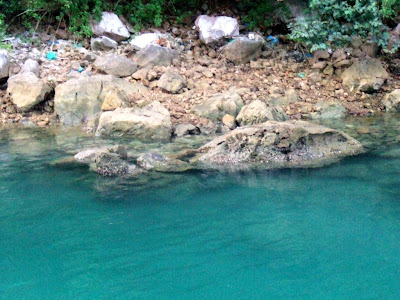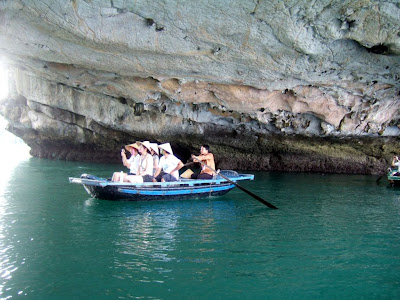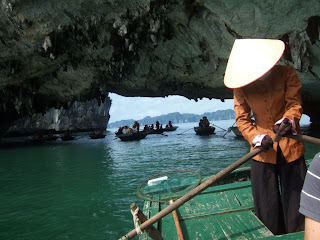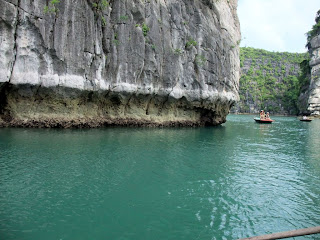
There are 4 residential areas of fishermen, covering about 400 household with a community of around 1600 people live on this world heritage site of Halong Bay. Fishing villages are a cultural heritage as well as a tourists attraction. People has been living in these houses for hundreds of years with fishing as their main income activity.



People from the 4 fishing villages are descendents of the first two water living quarters, Giang Vong and Truc Vong, which were formed in the beginning of 19th century. Due to rising water, people at that time started making homes from boats but maintain an ancestral shrine on mainland. During the war against French in 1946-1954, Vietnam people scattered among various islands. They later returned to rebuild their floating villages when the region was stabilized. Ba Hang, Cua Van, Cap La and Vong Vieng are the 4 current fishing villages on Halong Bay. Vong Vieng is the largest but less touristic.



To enter the villages, guests were have to be transferred by rowing boats after disembark from the mother boat.



Rowboats ferry passengers to floating villages.



Hundreds of traditional Vietnamese junk ships ferry tourists around Halong Bay to explore not only its beautiful sites, its hidden caves, white beaches but also its cultural floating villages.


A man in his woven bamboo boat!


Magically calm place


Remarkable landscape and geomorphology.

A truly nature wonder!



Cavern passage near Vong Vieng Village.


Another wonderful sight of Halong Bay after rowing cross the cavern passage.





Under the limestone roof of cavern passage.


An incredible limestone formation over the cavern passage.









View from Cavern passage!



A crossed road of sea and sky.


A spectacle sight!








The pretty young local women slowly and silently paddled the guests in a large loop around the village.


A serene world sheltered amidst limestone towers.



Row, row, row a boat......rowing through the tranquil village.



Oyster cluster cemented to rocks.





Away from the mainland is always a struggle especially in getting the children's education. It was not surprise at all to learn that children as young as 5-6 years old are already experts at casting nets.



The people of the village operate as a close-knit family.


Vong Vieng Village becomes attraction to a lot of tourists as it is a large and old-aged fishing village in Halong Bay, attached to great historical and cultural value.


Most of the rowboats are paddled by young pretty locals. To improve for a better living, women always know how to participate and play an important part.


Experience the villagers daily life and traditional culture and customs of the fishermen who live in the world heritage area of Halong Bay.



From many important cultural and historical relics found, it was believed that Halong Bay was the home of ancient Viet people. The fishermen in the past stayed and lived in a little boat as a home. They indeed struggled a hard life. The living of the villagers now have been slowly improving. Besides fishing, they now establish marine agriculture like rear fish and also pearl culture. And with supports of tourists and local travel company,they manage to build a class room and a small teacher's room to establish the education for the young generations.



The floating village looks small and peacefully resting in the shadows of the towering limestone cliffs that dot Vietnam's infamous Halong Bay.



Local sell wares and supplies to villagers.











Greatest challenge to life in the fishing village mostly are related to environment like change of climate, rises of sea level, the increasing violent storm and now the pollution as well.



Rock formation are usually within a height of 50m to 100m and are named in accordance to their unusual shape and structure.



This fishing community who live on the bay still remain their own special culture. They have no home or land ownership but live on boats and floating wooden houses in the core zone of Halong Bay. Their livelihood is fishing and aquaculture.


Floating homes look spacious and clean. The well off families even have tiled-roof house with furniture, radio, television.


Through fishing and marine agriculture, the villagers sustain their living.


Rock islands on Halong Bay are too poor to be cultivated but the bay is rich in fish and sea products. The locals live in floating boats go for fishing and sell their catches to bigger boats that bring the fresh fish to markets at the continent.



Floating Village is one of the highlights when visiting Halong Bay.



No comments:
Post a Comment